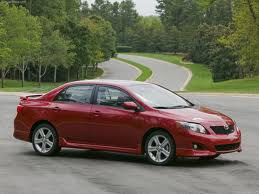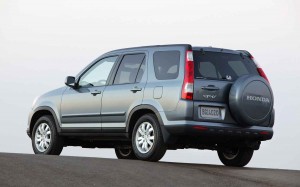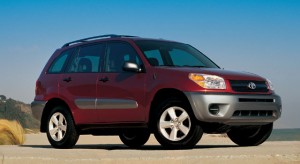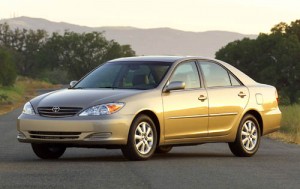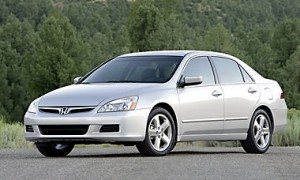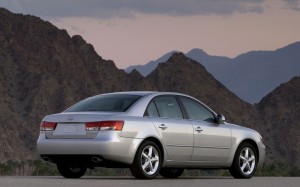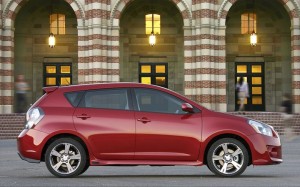Used 2010 Hybrids, National Average Prices

In No Order of Ranking
2010 Toyota Prius , $6,853- $8,703
51city/48 hwy
2010 Honda Civic Hybrid, $5,852- $6,526
40 city/45 hwy
2010 Ford Fusion Hybrid, $5,797 (no range available)
41city/36 hwy
2010 Nissan Altima Hybrid, $6,792 (no range available)
35 city/33 hwy
2010 Toyota Camry Hybrid , $7,472- $7,784
33 city/34 hwy
2010 Honda Insight Hybrid, $4,967- $5,623
40 city/43 hwy
2010 Mercury Milan Hybrid, $6,351 (no range available)
41city/36 hwy
U.S.News Cars
Used 2010 Full Sized Truck Prices, National Average

Ford F-150, $6,600 - $19,300
Dodge Ram 1500, $7,200- $18,000
Chevy Silverado 1500, $7,500- $16,000
GMC Sierra 1500, $6,800- $16,100
Nissan Titan $10,300- $14,000
Toyota Tundra $11,800- $20,200
(U.S. News Cars)
Used Cars Under $10,000-My Favorites
A used car purchase under ten thousand dollars can be tricky. Below you will find the best cars for under $10,000. There are definitely other quality used cars that are not on this list but, in general, these cars are my best picks that consistently score high in quality, customer satisfaction and have above average reliability as used cars.
I classify this article into 3 different types of cars: Economy, Mid-Size and Luxury. A car for under $10k will generally have 75k on the odometer for economy and mid-size cars and up to 100k for luxury models.
Keep in mind that a good car can be made into a bad car by bad ownership. That is why I created the “10 Easy Steps” tutorials. Having my 10 Easy Steps as your guide will enable you to safely determine if the car you are about to purchase will continue to be reliable and safe.
You will be searching for cars online and you will definitely want to have a Carfax account. I could not operate as a car buyer without one and nor should you. It is the beginning of a process that will provide you valuable information on each car you find online. Get the plan where you have unlimited searches. Click here to get the best Carfax deal on that.
Related Posts:
Best Used Cars to Buy (all price categories)
Used Cars to Avoid
So now here are the best cars to buy for under $10k
Economy Category:
Toyota Corolla 2008-2009
The venerable 10th Generation Corolla is about as reliable as an economy car can be. Although it won’t score high on the fun list (unless you pony up for the “S” model) it goes about the business of getting you from point A to B with predictable results. It is cheap to keep. Like a good friend the Corolla is a car that is easy to please, does not require constant pampering, easy-going, unselfish and usually pleasant to be around. The Corolla is the best bet for an economy car.
Honda CRV 2004-2005
The Honda CRV- like the competitive Rav4 is a practical choice for small families. Room for the dog and it seats everyone comfortably. They are very dependable cars with one exception- the air conditioning unit. It has a tendency to fail and cost a lot of money to fix. Get one that has records indicating that it has been fixed and you are well on your way to happy ownership. There is a nifty fold down picnic table designed behind the rear seats, which is interesting. The CR-V comes in AWD except without the locking differentials.
Honda Fit 2007-2008
The Fit is a relative new kid on the block of small fuel efficient cars. It appeared on the American shores in 2008. What separates the Fit from the rest of the small car pack is that it is extremely versatile in how the interior can be arranged. I call the Fit the Swiss Army Knife of cars. Just when you think you have it figured out you discover another cool feature that it has. Dependable, easy to work on, decent gas mileage all wrapped up in a well thought out design provide a lot of bang for your buck. The Fit has a fun factor that other small cars lack.
Below is a full video review.
Toyota Rav4 2004-2005
Although the 2nd generation Rav4 was completely redesigned in 2001 it wasn’t until 2004 that Toyota brought in the really good stuff. Airbags all around and a new 2.4 engine made this Rav4 as special as it is. This Rav4 is ultra-dependable, practical, tough as nails, light on its’ feet and easy to drive with plenty of power to make it a top pick . It also came in a rugged 4WD version with real world locking differentials for those who like to hit the snow or rugged terrain.
Hyundai Elantra 2007-2009
The sleeper of the group is the Hyundai Elantra. It was during this time that Hyundai made a name for itself and planted their brand of high quality cars right between Honda and Toyota. Hyundai came so far so fast within a short period of time that some people cannot believe that they are as good as they are. And that is the reason that you can find a great deal on a used Elantra. There is still something in the back of some people’s minds that cannot wrap their brains around the brand being dependable. The Elantra is a lot of car for the money.
Mid-size Category:
Toyota Camry 2005-2006
No other car can compete with the Camry in the mid-size category, at least not on reliability. It will get you to church on time and will look great in the parking lot. Having fun getting there is another thing entirely. Though the Camry is one of the best built cars on the planet with an impeccable reputation, it is on the bland side. Opt for the 4 cylinder and you will achieve the mileage usually reserved for smaller cars. The Camry is the quintessential family sedan. The plus side is that you can give it to your teenage kid as a hand me down. With safety features such as four-wheel disk brakes, ESC and ABS, it is a car that will allow you to breathe just a little better.
Honda Accord 2006
In 2006 the Accord received major mid generation design enhancements. Although it looks basically the same as the earlier model, the changes were significant enough to go with 2006. More fun than the Camry and if you opt for the optional VTEC V-6 you will be rewarded with exceptional performance in a car that would otherwise be classified as just another family sedan. Very dependable. Very Honda.
Hyundai Sonata 2008
Less expensive than the Accord or Camry, the Hyundai Sonata is keeping with the “best bang for the buck” philosophy that we have come to appreciate from the entire Hyundai lineup. The Sonata received a facelift as well as other key features for the 2008 model. Comfortable, reliable and respectable the Sonata is a bargain in the mid-size category.
Pontiac Vibe 2009
Redesigned in 2009, the Pontiac Vibe is the identical twin of the 2009 Toyota Matrix with different taillights and badge change. Everything else is exactly the same. Same engine, same powertrain, same Toyota quality. 2009 was near the end of the odd partnership GM had with Toyota that saw both cars coming out of the same factory, but because it is labeled a Pontiac it gets discounted in the car world. Not to worry. Even though the Pontiac brand is no longer produced, the Toyota engine is easy to service and all the after-market parts are widely available.
Luxury Category:
Hyundai Azera 2008
The Hyundai Azera was Hyundai’s top of the line product until the arrival of the famed Genesis. This full-size car/ boat scores high on luxury, comfort, convenience and reliability. It was the perfect marriage of ascending Hyundai quality at a bargain price. 2008 is when Hyundai was well on it's way to becoming the successful car maker that it has now become. The Azera is a wonderful example of that turnaround. With the big seats in the back it is just a pint shy of a limo, and almost as fun.
Toyota Avalon 2005
Toyota's flagship car was fully redesigned and released into the world in 2005. Bigger and better than any other sedan that Toyota had ever produced, the Avalon was a rare combination of safety, luxury and extreme reliability. Ease your way into the ultra-comfortable seats and enjoy the library quiet cabin and then let the smooth 3.5 engine power you along the open road. The Avalon was the pinnacle of comfort coming from the shores of Japan and is one of the best choices in the used luxury category.
These are the finest examples of cars that can be bought for under $10k. Please note that in most states there are added fees to your purchase such as tax, title, registration and license fees. Keep in mind that a $10,000 car will not be the same price weeks or months from the time of this writing. Also be aware that the condition of the car will greatly affect the end price.
Please visit my website to know how to locate, inspect and negotiate on the car that you finally choose. My website provides the most comprehensive information on the used car buying process that can be found anywhere. Visit CarBuyingSupport for the best car buying tutorials on the web.
Greg Macke – Your Car Angel
Greg Macke is a professional car buyer and consumer advocate. He has worked closely in the industry to improve the buyers experience. His high quality car buying tutorials offer help to the car buying public.
How to Avoid the Dealer Nightmare
 Dealerships are in the business of extracting as much money out of you as possible. That is the sales persons job, and they are highly trained at it.
Dealerships are in the business of extracting as much money out of you as possible. That is the sales persons job, and they are highly trained at it.
When a client contacts me for a car purchase, I feel as though I am being summoned to go into the battle field. I may be called Your Car Angel but most times it seems I am more of a car warrior. It is a tough days work out there at the dealerships and I have experience that wins my clients easy victory's day after day. This is not to say that I am mean and nasty to the sales people, mowing them down in the process. No, there is a way to calmly achieve success and it is all strategy related. Ruthless negotiating is, however, part of that overall strategy. I will now walk you through the process step by step.
Starting - Contacting the Dealer
Find the car you are looking for by checking the dealer sites on-line. Check history's on the cars that interest you and make sure they are accident free. Many dealer sites actually provide the free Carfax right next to the profile of the car. After you have cleared the car history you want to call the dealership to know that the car exists. You would be surprised how many dealers fail to remove a car from their website once it is sold. When you contact the dealership ask for the new or used car Fleet Manager. You might get bounced around a bit but verify that whoever you are talking to is the Fleet department. Why you ask? Because the Fleet Department is the least profitable division "per unit" in the dealership and they are much kinder people in general to work with. They also are not so stressed out. Finally, get their cell phone number. This is important for later.
Making the Appointment at the Dealership
Once you have cleared the car and know that it actually exist, you want to go to the dealership to see it. Make an appointment with your contact person and ask to have the car available to look at. This forces them to take the necessary steps in preparing the car so you do not wait around 20 minutes waiting for them to get it out of the back lot and cleaned up. Remember, there are many layers to the car buying process and if there are 15 minute waits here and there it will add up to another 2 hours to the process. Much of what I am talking about is how to speed things up. A quick battle so to speak, as opposed to a long drawn out process which is a technique by the dealer to wear you out and you end up signing anything just to end the pain. We will not let this happen to you! The best time is the end of the month when they are trying to meet quotas and the best days of the week are Tuesday and Wednesdays mornings which are the slowest times. Never buy a car on the weekend from a dealer.
Arriving at the Dealership
Park on the street (not in their customer parking) and enter the lot from there. Now that you are on the the lot, go directly to your contact person and if anyone approaches you, say that you are taken care of and you are here to see that one person only. If you get tossed around at the lot demand that you only want to deal with one person and that person should be high up on the chain of command as in a manager. When you speak to the contact person ask them for the keys and request that you want to be left alone to be with the car and that you will get back to them after you inspect the car. Do not let them hover over you. There is nothing that they can tell you that you cannot find out for yourself. DO NOT ENGAGE IN PROTRACTED DISCUSSIONS WITH THE SALES PEOPLE!
Test Drive
The test drive will consist of driving a "loop" that the dealership will want you to take the car and it is generally as short as possible. Allow yourself to take the car wherever you want including the freeway and parking lots so that you have to maneuver the car more than just in a straight line. They know the neighborhood so don't worry about getting lost. If the car is low on gas (say below a 1/2 tank), casually ask if the car will be sold with a full tank. If he/she says "yes" to that, then that will become binding later in the process. Bring along the test drive check list.
Walk Away
At this point they will have some time invested in you. Your job now is to walk away. Yes, go have some coffee or something which requires you to leave the lot. It is the most productive part of the entire process. During that time away, figure out the price that you are comfortable with and now you will negotiate the entire deal by phone. Be firm and do not let go until they have quoted you the price of the car excluding fees (taxes, registration, smog and transfer fees). Once that amount is agreed upon by phone, you now get back to the lot and process the paperwork.
You will need the following:
1/ Copy of Drivers license
2/ Copy of Proof of insurance
3/ A document from your credit union or bank showing their best loan rate (if you are financing)
4/ Names and addresses of 3 people you know.
5/ If you have a co-signer they will have to provide the same information minus the proof of insurance.
Signing the Docs and Saying No
When you go back to the lot it should be straightforward into signing the preliminary paperwork including the loan application, if it applies to your deal. If you are intending on paying for the car in full (and yes they will taken a personal in-state check) you will still be required to fill out some paperwork including your name address, banking info and contacts like friends and family. This is because you will be taking the car off the lot before the money has been cleared from your bank and they need basic information in case of recourse. Do not sign anything at this point other than the Credit/Loan Application. After you are done signing the loan docs and they have checked your credit, you will have the financing rate presented to you. Feel free to tell them that the rate they are quoting you is not good enough and that you have other sources for the loan. In most cases I see them lowering it substantially. After you have the best price of the car and the best rate for the financing you will be committing to buying it. Tell the person you are dealing with that, since you will be buying the car, if they could send it into detail to get it ready for you (all cars go through this process no matter how clean it was when you test drove it). This is a major time saver.
Closing the Deal
At this point there are no negotiations left to do. The price that you are paying is crystal clear and any lending rates will be confirmed. You now move on to financing which will be in another office where you will meet the closer. They are really good at a couple of things and you must know this before sitting down with them. Firstly they are professional paper folders. Why is that so important you ask? The answer is that they do this same process 5-6 times per day and they are extremely good at it. In fact they are the most highly paid employees of the dealership. They are in the business of folding additional money into the deal in what is referred to as "back-end profit". They will pitch to you, under no uncertain terms, the need for a very expensive extended warranty, car undercoating. glass etching, Lojack and gap insurance. Use your own judgement but remember that there is nothing that they will offer you that you will not be able to buy the very next day for a fraction of what they are charging you. Be especially careful with the extended warranty. Once you say no to everything you will be required to sign your name dozens of times. If anything was promised to you along the way, like that full tank of gas, that extra remote they said they had, floor mats or new tires will show up in what is called the "Due Bill". This is where they are required to document their promises to you. This is a binding document and you will see that due bill in the paperwork. They are required to have you sign off on it.
Happy Ending
After all the signing they will send you on your way. Your car should be waiting for you and away you go with a high quality car at the very best price without any of the usual headaches associated with the dealer nightmare.
Congratulations on an easy deal!
For a more detailed guide go to my professional website Car Buying Support. There you will find an extensive library, inspection checklists and much, much more. With this guide you will save thousands of dollars and buy your next car with me, your professional car buyer, at your side.
Greg Macke - Your Car Angel
![]() Greg Macke is a car blogger and author of “My 7 Secrets to Buying a High Quality Used Car”. He is a professional car buyer and consumer advocate working closely in the industry to improve the buyer’s experience. His high quality car buying tutorials offer help to the car buying public. – See more at: carbuyingsupport
Greg Macke is a car blogger and author of “My 7 Secrets to Buying a High Quality Used Car”. He is a professional car buyer and consumer advocate working closely in the industry to improve the buyer’s experience. His high quality car buying tutorials offer help to the car buying public. – See more at: carbuyingsupport
How to Buy a Car on Craigslist Without Getting Screwed
Buying a car from a private party on Craigslist can be a very good deal in your car search but it can also be disastrous if you do not know the important steps one needs to make. Below I go through the easy steps to where I explain the process.
I expect that at this point you know which car you are looking for. If not, refer to my used car Halo List which lists the best of the best used cars that are out there.
You start your search by knowing where to find the cars that are being sold by private party sellers. There are a number of publications that deal with sellers but if you are looking for a commuter car and not some exotic Ferrarri your best bets are Autotrader and Craigslist. Both of these have their strengths and weaknesses. In this article I will focus on the ever popular Craigslist.
Craigslist is a site where you can sell cars (and just about anything else) for free. This no-cost site attracts the average seller due to its popularity but it also attracts people who are in the business of swindling unsuspecting consumers. You must know how to be able to identify these unsavory sellers from real sellers. There are two types of swindling happening on Craigslist car listings. They are the PayPal scammers and then there are Curbstoners (which I will define in a moment).
PayPal Scammers
These scammers are detected by looking at the ad itself. They generally do not use the default Craigslist format which allows you a body of text and a few simple pictures. Take notice of the font that Craigslist uses and if the font style is different than the default that is a red flag. The second way to detect these people is notice that the license plate is either mysteriously missing, blurred or blocked. This is because they do not want the authorities tracking them and the license number would make it possible to track them down. I will go into exactly how the scam works in another blog post but let's just say they are extremely good at getting your trust. Slowly but surely there comes a point at which you believe in that trust and let go of important information like your bank account info. Another way is that they generally do not give away their phone numbers that can be tracked. Beware of any ad that does not reveal the phone number.
Curbstoners
You might have heard me mention these types of sellers before but it bears repeating. Curbstoners are people who somehow get their hands on a car (usually from insurance auctions) that has been damaged, salvaged or stolen and sell it as though they are the owners. These people are in the business of transfering a car from one person to another without ever appearing in the paperwork. If there is any paperwork to the car, you can bet that it is not their name and you are being fooled into thinking they are the owners. This is a serious problem and you never want to go forward with a deal like that.
In summary Craigslist is a very good place to hunt for great car deals by the owners. But you must be judicious in your search, weeding out the curbstoners, scammers and swindlers. Follow the advice that I give above (and in the video) and you will be way ahead of the pack in terms of finding authentic sellers.
Good luck searching!
Greg- Your Car Angel
Greg Macke is a professional car buyer and consumer advocate. He has worked closely in the industry to improve the buyers experience. Visit him at http://carbuyingsupport.com/
How Car Dealers Screw You With Financing (and how they get away with it)
 When it comes to financing, car dealers generally do not play fair. There are many dealer financing tricks to contend with. They have an incentive to charge you as much as possible in the annual percentage rate (APR) for the amount you will need to finance. The problem is dealers make a margin on all the deals they write up. The higher the APR, the higher their margin (read paycheck).
When it comes to financing, car dealers generally do not play fair. There are many dealer financing tricks to contend with. They have an incentive to charge you as much as possible in the annual percentage rate (APR) for the amount you will need to finance. The problem is dealers make a margin on all the deals they write up. The higher the APR, the higher their margin (read paycheck).
Whether you are buying new or used, as a consumer you must be informed and prepared.
In order to keep them honest you will need to know your credit score before waltzing into the dealership. There are two types of scores utilized by the dealers. Most commonly they will use the traditional FICO score, which is available to you for free www.credit.com, The other is called the "Auto Industry Option Credit Score", otherwise know as your auto score. The bad news is that consumers do not have access to this score.
The good news is that you can get a pretty good sense of what your Auto Industry Option credit score will look like from your credit report which you can obtain for free at www.annualcreditreport.com. The even better news is that even if you have a so-so standard FICO score, if your auto credit score is good you may still get a decent auto loan. This car credit score puts a lot more emphasis on how you handled previous auto credit. It can work in your favor if you have satisfied a car loan with no late payments.
However, it will work against you if you never had a car loan (first time buyers beware).
The Auto Industry Score essentially provides a dealership with a 3-digit number that ranks risk of default for the term of the loan. If you’ve had previous car loans and have paid them promptly and in full (something you should be able to see on your regular credit reports) you will generally have a good Auto Industry Score. On the other hand, dings to your credit report for missing or late payments on installment loans for auto financing can kill your Auto Industry Option score.
Dealers are increasingly using this scoring system and will choose this score especially if it reflects poorly on you so they can justify the higher APR on an unsuspecting consumer. Your job is to make sure they use the higher of the two scores that are available to them and have your loan based on the better of the two. This is where knowing your FICO score is important, for it could save you a lot of money in your loan agreement.
So when you walk into the dealership you should have a copy of your FICO credit score in hand. If you are told that your score is less, then stay on course, then pull it out and show them. You will be amazed that the leverage you have if you are informed. Remember, they want, no, need your business. You will force their hand and get a much better financing rate as a result.
Can I Safely Rent or Loan My Car to Someone?
 Over the years people have come to me with many car questions. Renting or loaning cars has come up often.
Over the years people have come to me with many car questions. Renting or loaning cars has come up often.
The question goes like this: "Does my insurance cover a friend if I lend or rent my car to them?" and "Am I covered if I drive someone else's car?" and "Does My Insurance Cover Other Drivers?"
The question of allowing other drivers to drive your car and whether they will be covered by your existing auto insurance is critical. Individual policies vary so you need to speak to your agent regarding the policy limitations.
In short, there are risks to the exchange that, if an accident occurs, you are the one that is saddled with the long term increase in premiums. You can compare this situation to someone "borrowing" your credit card. Whatever happens while that person utilizes your good name and your good standing will stay on your record for many years and could cost you extra money during that time. It is the same with car insurance. Whatever happens while they drive your car under your policy will stay on your record and as a result could increase your premiums in the event there was an accident. It happens. That is the risk you take. Regardless, if you do decide to go forward with it, talk to your agent and get the proper coverage.
When you speak to your car insurance agent, you should ask who precisely is covered and what happens if you give permission to someone (whether borrowing or renting), and there happens to be an accident. If you have complete coverage, many insurance carriers will cover the driver, but only at the minimum coverage limits. However, there are certainly insurance carriers who will not cover any driver who is not specifically named in the policy.
An important factor can be if that person resides at your home and if they are directly related to you. In general, if someone is living in your household and they regularly drive your car, then the insurance carrier expects you to have that person named on the policy. They will need to undergo the same qualification process as any other policy holder.
In some cases, if a family member is visiting and has permission from you to drive the car, then the insurance company will cover them if there is an accident, but the coverage may be limited. Additionally, in the future, that person may be specifically excluded from any future inclusion on the policy and your rates may increase as a result of any accidents.
Once you put someone on your policy (as a family member), it can be difficult to remove them. That could be a problem if they are in an accident at a later point, unrelated to your car, but still your rates rise as a result.
Driving Someone Else's Car
Are you covered or do you need to get coverage?
If you carry auto insurance for your own vehicle, when driving another car, typically you are covered by your own policy in the event that you get into an accident. Certain factors may be weighed including the reasons for driving a car other than your own (if you did not have permission you will certainly not be covered).
With comprehensive insurance, which covers almost everything, it is the car rather than the driver that is covered. This, however, requires many stipulations to be put in place such as who is allowed to drive the car. If you are driving a car with this type of insurance and if you are not listed as a driver--even if you have permission--you may not be covered in an accident.
Under normal circumstances, provided the car you are driving is insured or you carry insurance for your own vehicle, an accident will be covered. Since comprehensive insurance follows the car, the insurance covering the car you are driving (with permission) will cover at-fault accidents. If the car has no insurance attached to it but you do have insurance, then your insurance will most often kick in and cover you. It is a complicated situation, but provided you have permission to drive another car and you have insurance, you will be covered in the event of an accident. The best thing to do, however is to check the exact stipulations of yours or your friend or family member's insurance company.
What is a Salvaged Car and Should you Buy One?
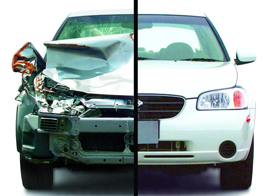 Generally people want a safe and reliable car. A salvaged car falls short on both accounts. But what is a salvaged car and should you buy one?
Generally people want a safe and reliable car. A salvaged car falls short on both accounts. But what is a salvaged car and should you buy one?
Cars are built to rigid specifications for safety reasons. There is a built-in integrity that is engineered so that the car can withstand accidents without collapsing. Although specific crumple zones are key safety measures, those areas have been carefully engineered so that the impact does not intrude into the passenger cabin. However, structural weakening from a previous accident is very different and extremely dangerous to the passengers in that car.
As an example of this I will use a soda can. An aluminum can is light but it can take a fair amount of your weight before collapsing due to the integrity of the design. If you were to place the smallest dent in the can it would only be able to withstand a fraction of your weight. Even if you try to bring the can back into its original shape it will never be the same.
The same applies to your car frame. Once it has been compromised, no amount of “straightening” will bring back the original integrity. The unsuspecting owner is driving a car that, if it were in an accident, even a relatively minor one, the car would never be able to withstand the stress loads that it was originally designed to handle and it would tragically collapse.
Add to that the airbags that most likely deployed in a previous accident. You are trusting someone took the time to properly restuff, reprogram and safely put those very expensive airbags back together, like it was originally designed. Just like the rest of the car it will never perform to factory specifications and the result is often catastrophic.
But how can you be positive that the car that you are interested in buying does not have previous repairs?
There are a few good places to start. A car with a salvaged title is a pretty good candidate for frame damage. In this video I show you How to Inspect a Car for Frame Damage. A salvaged car is one that the insurance company declared a total loss. In other words the total repair cost from an accident would have exceeded the value of the car. In these cases the title would have to reflect this.
However, there will always be cars that somehow get through the process of frame repair without being branded a total loss. It happens more than you might think. Therefore it is important to know how to spot the evidence of this frame straightening procedure. It takes less than a minute and it is a straightforward part of the inspection process.
In my car buying videos I walk you through this procedure so that you know for sure if the car you are interested in buying has been in previous accident and has had frame repair. CarBuyingSupport.com has that and much, much more. All the important information for buying a high quality used car is at your fingertips. Most importantly I will teach you what cars you should never buy, like one with a salvaged title.
Greg Macke- Your Car Angel
![]() Greg Macke is a car blogger and author of “My 7 Secrets to Buying a High Quality Used Car”. He is a professional car buyer and consumer advocate working closely in the industry to improve the buyer’s experience. His high quality car buying tutorials offer help to the car buying public. – See more at: Car Buying Support
Greg Macke is a car blogger and author of “My 7 Secrets to Buying a High Quality Used Car”. He is a professional car buyer and consumer advocate working closely in the industry to improve the buyer’s experience. His high quality car buying tutorials offer help to the car buying public. – See more at: Car Buying Support
Honda Timing BELT or timing CHAIN?
Here is the complete Honda Timing Belt and Timing Chain List. Some Honda engines are timing belt and others are chain. You need to know which one you have. A belt will need to be changed at regular intervals (usually at 90-120k miles) whereas a chain is generally good for the life of the engine and does not require maintenance. As a side note ALL Honda engines are interference engines. There are no Honda engines that are non-interference.
To see my "TOYOTA Timing Belt and Timing Chain List" CLICK HERE:
To know if your car has a timing chain or belt watch the video where I explain how to quickly check. The list below is for all HONDA engines dating back to 1996.
2008 to 2014 Accord V6 3.5 - Belt
2008 to 2014 Odyssey pilot and Ridgeline V6 3.5 -Belt
2006 to 2007 Accord V6 3.0 - Belt
2006 to 2016 Civic - Chain
2005 Accord 3.0 - Belt
2003 to 2011 Element - Chain
2003 to 2016 CR-V - Chain
2003 to 2004 Accord 3.0 - Belt
2003 to 2016 Accord - 2.4 - Chain
2003 to 2004 Odyssey and Pilot V6 3.5 - Belt
2002 Civic 1.7 - Belt
2002 Accord 2.3 - Belt
2002 Accord 3.0 - Belt
2002 Passport 3.2 - Belt
2002 Odyssey 3.5 - Belt
2001 Civic 1.7 - Belt
2001 CRV 2.0 - Belt
2001 Prelude 2.2 - Belt
2001 2.3 Accord - Belt
2001 Passport 3.2 - Belt
2001 Odyssey 3.5 - Belt
1999 to 2000 Civic 1.6 - Belt
1999 to 2000 CRV 2.0 - Belt
1999 to 2000 Prelude 2.2 - Belt
1999 to 2000 Accord 2.3 - Belt
1999 to 2000 Passport 3.2 - Belt
1999 to 2000 Odyssey 3.5 - belt
1998 Civic 1.6 - Belt
1998 CRV 2.0 - Belt
1998 Prelude 2.2 - Belt
1998 Odyssey and accord 2.3 - Belt
1998 Accord 3.0 - Belt
1998 Passport 3.2 - Belt
1997 Civic 1.6 - Belt
1997 Del sol 1.6 - Belt
1997 CRV 2.0- Belt
1997 Accord 2.2 - Belt
1997 Odyssey 2.2 - Belt
1997 Prelude 2.2 - Belt
1997 Accord 2.7 - Belt
1997 passport 3.2 - Belt
1996 Civic 1.6 - Belt
1996 Del sol 1.6 - Belt
1996 Accord 2.2 - Belt
1996 Odyssey 2.2 - Belt
1996 Prelude 2.2 - Belt
1996 Prelude 2.3 - Belt
1996 passport 2.6 - Belt
1996 Accord 2.7 - Belt
1996 Passport 3.2 - Belt
I hope this information has helped you!
Greg Macke- Your Car Angel
![]() Greg Macke is a car blogger and author of “My 7 Secrets to Buying a High Quality Used Car”. He is a professional car buyer and consumer advocate working closely in the industry to improve the buyer’s experience. His high quality car buying tutorials offer help to the car buying public. – See more at: https://carbuyingsupport.com/
Greg Macke is a car blogger and author of “My 7 Secrets to Buying a High Quality Used Car”. He is a professional car buyer and consumer advocate working closely in the industry to improve the buyer’s experience. His high quality car buying tutorials offer help to the car buying public. – See more at: https://carbuyingsupport.com/
Best Family Car
2001-2007 Toyota Highlander - Used Car Review
The first generation Toyota Highlander (or Kluger as it is known in Australia) was introduced to the world in 2001. The word ‘Klug’ has its’ roots in German, meaning 'clever'. Why they name a Japanese car a German name that is sold in Australia is a mystery to me. Nevertheless the Highlander is a clever car indeed, and I am happy that it found its' way to America as the best family car - ever.
If you ever wanted a perfect combination as a family car, the Toyota Highlander is a top choice. Daringly introduced as the first real crossover vehicle, and harking back to the good old fashioned days of the station wagon, the Highlander was Toyota's stab at an untapped market for families that wanted space but did not want to be hauling a bulky van around. It has been a concept copied by just about every other manufacturer since, but never equaled.
 The amazing versatility of the original 2001 design is apparent when you take into account that Toyota was able to configure 3rd row seating in 2004 and outfit it as a hybrid in 2006 without changing the exterior design whatsoever. The first generation ran all the way till 2007. That makes it one of the longer running designs in the automotive world.
The amazing versatility of the original 2001 design is apparent when you take into account that Toyota was able to configure 3rd row seating in 2004 and outfit it as a hybrid in 2006 without changing the exterior design whatsoever. The first generation ran all the way till 2007. That makes it one of the longer running designs in the automotive world.
However, from an engineering and improvement perspective, the Highlander went through many changes between 2001-2007. For instance, in 2004 Toyota refreshed the Highlander with new engine and transmission improvements as well as the optional and very nifty third row seating. We take it for granted these days but in 2004 it was a revolutionary configuration to have a hideaway seat in a crossover. Up until that time the hide-away 3rd row seat was reserved for much bigger vans. However Toyota was able to pull off the feat in a car that was much more, well, car-like.
 2006 marked the year that Toyota brazingly placed the Hybrid Synergy Drive System (that proved so well in the Prius) in the Highlander. Keep in mind that Hybrids only accounted for a fraction of new car sales in 2006 - so it was a daring move. The hybrid configuration brought more horsepower as well as better gas mileage all in one.
2006 marked the year that Toyota brazingly placed the Hybrid Synergy Drive System (that proved so well in the Prius) in the Highlander. Keep in mind that Hybrids only accounted for a fraction of new car sales in 2006 - so it was a daring move. The hybrid configuration brought more horsepower as well as better gas mileage all in one.
Other changes in the hybrid model was that the power steering pump, water pump and AC compressor were changed from belt-drive to electrically powered versions. A modified alternator was incorporated into the hybrid system.
The second generation Highlander debuted in 2008 and ran till 2013. The third generation was introduced in 2014 and it continues today as the very best crossover in its class.
The Highlander shares a platform with its Lexus RX cousin. It came standard with front wheel drive and offered all wheel drive as an option. Unlike Toyota's own 4Runner and other midsized competitors such as the Jeep Grand Cherokee, or Chevrolet Trail Blazer, the Highlander claimed on-road comfort with its unit body construction and independent rear suspension. It is truly a car-like truck, or a truck-like car. A wonderful combination whichever way you see it.
The Limited models came nicely equipped with automatic headlights, 17-inch wheels, heated outside mirrors, a windshield wiper de-icer, power-adjustable front seats, a fold-flat third-row seat, an acoustically perfect JBL sound system, fog lights and Home Link. Popular options for the Highlander include a rear-seat DVD-based entertainment system, a tow package and, on the Limited models, leather seating and a navigation system.
Engine types for the Highlander:
* 2001-2007 2.4 L 2AZ-FE I4, 155 hp (119 kW) First Gen
* 2001-2003 3.0 L 1MZ-FE V6, 220 hp (164 kW) First Gen
* 2004-2007 3.3 L 3MZ-FE V6, 225 hp (172 kW) First Gen
* 2008--2014 3.5 L 2GR-FE V6, 270 hp (201 kW) Second and third generation
* 2009--2014 2.7 L 1AR-FE I4 187 hp (139 kW) Second and third generation
The Highlander drives like a car, works like a truck, is fast and efficient and all the while being rock-solid reliable. It is stylish without overstating itself. What is there not to love?
Greg Macke- Your Car Angel
![]() Greg Macke is a car blogger and author of “My 7 Secrets to Buying a High Quality Used Car”. He is a professional car buyer and consumer advocate working closely in the industry to improve the buyer’s experience. His high quality car buying tutorials offer help to the car buying public. – See more at: https://carbuyingsupport.com/
Greg Macke is a car blogger and author of “My 7 Secrets to Buying a High Quality Used Car”. He is a professional car buyer and consumer advocate working closely in the industry to improve the buyer’s experience. His high quality car buying tutorials offer help to the car buying public. – See more at: https://carbuyingsupport.com/


